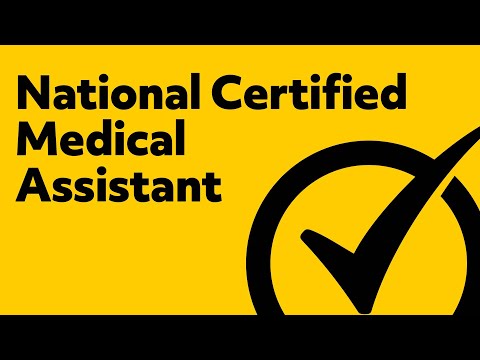Front Office Medical Assistants – Key Duties and Responsibilities
Contents [show]
As a front office medical assistant you will be responsible for a variety of tasks. Key duties and responsibilities include greeting patients, scheduling appointments, handling patient inquiries, and providing general administrative support. In order to be successful in this role, you must be organized, detail-oriented, and have excellent customer service skills.
Checkout this video:
Front Office Medical assistants Key Duties and Responsibilities
The front office medical assistant is responsible for greeting patients, scheduling appointments, answering phones, and performing other administrative tasks in a medical office. In addition, the front office medical assistant may also be responsible for rudimentary clinical tasks such as taking vital signs, drawing blood, and administering injections. Although the job duties of a front office medical assistant vary depending on the size and type of medical practice, there are certain duties that are common to most positions.
The key duties and responsibilities of a front office medical assistant include:
Greeting patients: The front office medical assistant is responsible for greeting patients when they arrive at the medical practice. The goal is to make the patient feel comfortable and welcome, and to facilitate a smooth check-in process.
Scheduling appointments: In many cases, the front office medical assistant will be responsible for scheduling patient appointments. This may involve coordinating with insurance companies to ensure that the appointment is covered by the patient’s insurance plan.
Answering phones: The front office medical assistant will be responsible for answering incoming calls to the medical practice. This may involve scheduling appointments, transferring calls to other members of the staff, or providing general information about the practice.
Performing administrative tasks: The front office medical assistant will also be responsible for performing various administrative tasks such as filing paperwork, updating patient records, and ordering supplies.
Taking vital signs: In some cases, the front office medical assistant may also be responsible for taking vital signs such as blood pressure and heart rate.
Drawing blood: The front office medical assistant may also be responsible for drawing blood from patients. This may be done as part of a routine examination or in preparation for laboratory tests.
Administering injections: In some cases, the front office medical assistant may also be responsible for administering injections to patients. This may involve vaccinations or other types of injections.
The Importance of Front Office Medical Assistants
First impressions are important, and in the medical field, they can mean the difference between life and death. That’s why front office Medical Assistants are so important. They’re the first point of contact between a patient and a medical facility, and they play a crucial role in making sure that patients receive the care they need.
Front office medical assistants are responsible for a wide range of duties, from answering phones to scheduling appointments. They need to be able to juggle multiple tasks at once, and they must have excellent customer service skills.
While every medical facility is different, there are some key duties and responsibilities that are common to most front office medical assistants:
· Answering phones: Front office medical assistants are often the first point of contact for patients calling a medical facility. They need to be able to answer questions about the facility’s services, schedule appointments, and transfer calls to the appropriate department.
· Greeting patients: When patients arrive at a medical facility, it’s often the front office medical assistant who greets them. This is an important role, as the assistant is responsible for setting the tone for the patient’s visit. Front officemedical assistants need to be able to put patients at ease and make them feel comfortable.
· Scheduling appointments: One of the most important duties of a front officemedical assistant is scheduling appointments. This can be a complex task, as front officemedical assistants must coordinate with doctors, nurses, and other staff members to ensure that appointments are scheduled correctly.
· Managing records: In many cases, it’s up to the front officemedical assistant to manage patient records. This includes keeping track of test results, immunization records, and insurance information. Front officemedical assistants must be organized and detail-oriented in order to effectively manage patient records.
The Role of Front Office Medical Assistants
Front office medical assistants are the first point of contact for patients visiting a healthcare facility. They play an important role in greeting patients, scheduling appointments, answering phone calls, and collecting patient medical history and insurance information. In addition, front office medical assistants may also be responsible for handling billing and coding tasks.
To be successful in this role, front office medical assistants must have excellent customer service skills and be able to multitask effectively. In addition, they must be comfortable working with confidential patient information and have a good understanding of Medical Terminology
The Skills and Qualifications Needed to be a Front Office Medical Assistant
A front office medical assistant works in the reception area of a clinic, hospital or other medical facility. They are responsible for greeting patients and visitors, answering phones, scheduling appointments and performing a variety of other administrative tasks. To be successful in this role, you will need to have excellent customer service skills and be able to multitask effectively.
The skills and qualifications needed to be a front office medical assistant vary depending on the employer, but there are some common requirements that are often seen in job postings. Some of the key skills and qualifications that are typically required include:
-Excellent customer service skills
-Strong multitasking ability
-Ability to handle confidential information appropriately
-Basic computer skills
-Familiarity with medical terminology
-Previous experience working in a medical office (preferred)
The Training and Education Required to be a Front Office Medical Assistant
The training and education required to be a Front Office Medical Assistant typically includes completing a certificate or diploma program at a community college, vocational school, or online education provider. These programs generally take between one and two years to complete, and they often include an externship component that allows students to gain real-world experience in a medical office setting. In some cases, Front Office Medical Assistants may also have completed a bachelor’s degree program in medical assisting or a related field.
The Certification Needed to be a Front Office Medical Assistant
To be a certified medical assistant, you will need to have completed an accredited training program and passed a certified medical assistant exam. There are two agencies that provide certification for medical assistants: the American Association of Medical Assistants (AAMA) and the National Healthcare Association (NHA). Each agency has its own certification process and requirements. Once you have completed your training and passed your exams, you will be eligible to work as a front office medical assistant.
The Salary and Job Outlook for Front Office Medical Assistants
Medical assistant is one of the fastest-growing careers in the United States according to the Bureau of Labor Statistics (BLS). The median annual salary for medical assistants was $33,610 in May 2018, and employment is expected to grow by 29% from 2018 to 2028.
One of the reasons for this high demand is that medical assistants can perform both clinical and administrative tasks. This means they can work in both the front office and back office of a healthcare facility.
If you’re thinking about becoming a front office medical assistant, you’re in luck. In this article, we’ll cover the key duties and responsibilities of this position, as well as the salary and job outlook.
Front office medical assistants are responsible for greeting patients, scheduling appointments, and answering phones. They may also be responsible for verifying insurance coverage, collecting co-pays, and coding patient information. In some cases, front office medical assistants may also be responsible for handling billing and collections.
The median annual salary for front office medical assistants was $31,750 in May 2018, according to the BLS. The top 10% earned more than $45,560, while the bottom 10% earned less than $22,470.
Employment of front office medical assistants is expected to grow by 29% from 2018 to 2028 – much faster than the average for all occupations. The aging baby-boomer population is one of the main drivers of this growth. As this population grows older and needs more healthcare services, there will be a greater demand for medical assistants.
The Benefits of Being a Front Office Medical Assistant
Front office medical assistants are the first point of contact between a medical practice and its patients. They are responsible for greeting patients, scheduling appointments, handling insurance paperwork and a variety of other administrative tasks. But their most important duty is providing outstanding customer service.
A medical assistant who is warm, friendly and efficient can make a big difference in the patient experience. When patients feel cared for and respected, they are more likely to stay with a practice and recommend it to others.
In addition to the satisfaction that comes from knowing you are making a difference in people’s lives, there are other benefits to being a front office medical assistant. These include:
· Good pay – Medical assistants earn a median salary of $16.17 per hour, or $33,610 per year, according to the U.S. Bureau of Labor Statistics (BLS). The top 10% earn more than $22.24 per hour, or $46,290 per year.
· Job security – The BLS projects that employment of medical assistants will grow 23% from 2019 to 2029, much faster than the average for all occupations. This growth is due to an increase in the number of older Americans who will need more medical care as they age, and a growing emphasis on preventive care and early detection of disease.
· Opportunities for advancement – With experience, you may be promoted to office manager or lead medical assistant. You may also move into another area of healthcare such as human resources or marketing.
If you are considering a career in healthcare, consider becoming a front office medical assistant. You’ll find it to be a personally and professionally gratifying career!
The drawbacks of Being a Front Office Medical Assistant
The drawbacks of Being a Front Office Medical Assistant
Working as a front office medical assistant has a few drawbacks. Some of these disadvantages include:
interruptions throughout the day from patients, doctors, and other staff members;
dealing with difficult patients or family members;
working long hours, often including evenings and weekends;
being on your feet for long periods of time; and
exposure to sick patients.
How to become a Front Office Medical Assistant
In order to become a front office medical assistant, it is important to first understand the key duties and responsibilities of the position. A front office medical assistant is responsible for greeting patients and scheduling appointments, as well as handling other office duties such as filing insurance paperwork and handling billing. There are a number of ways to become a front office medical assistant, but the most common path is to complete a certificate or associate’s degree program in medical assisting.







